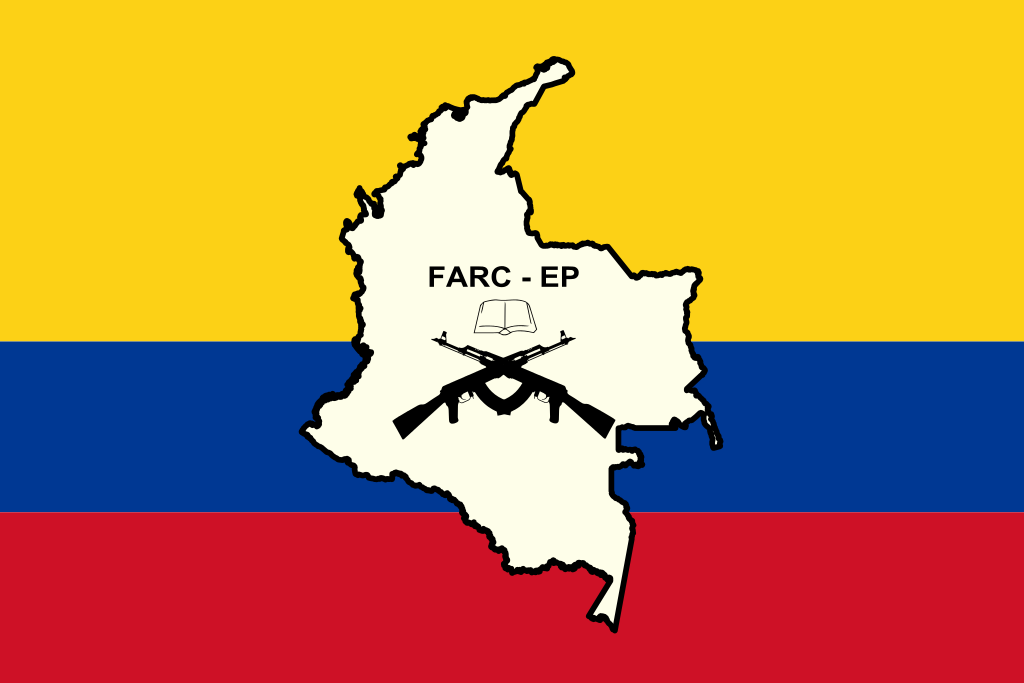DISSIDENTS OF THE FARC-EP
THE UNDERSIGNED.
Comrade organisations of the 8th Eyup Bas Symposium in Turkey
Accept our heartfelt salute, from the the guerrilla mountains of Colombia.
We who send this greeting are all those guerrillas of the bases and commands btrayed by a Secretariat which has turned its back on the guerrillas and reached agreement with our class enemy, those who we had confronted for 52 years, under the direction of the comrade Manuel Marulanda Vélez and the comrade Alfonzo Cano, the first of whom died of natural causes at the age of 80 (with 67 years in the guerrilla struggle) without giving up a centimetre to the enemy, and the other hunted in an immense operation by 6,000 soldiers, but he did not surrender to his killers and died on his feet like all the authentic sons of the people…
As said before we will make a small summary of what brought about this treason on the part of a Secretariat distant and alienated from the guerrilla base.
In 1953 the General Gustavo Rojas Pinilla concluded an armistice with the liberal guerrillas (the beginning of the FARC-EP), and after the demobilisation of the guerrillas the commander Guadalupe Salcedo was murdered.
Our commander Marulanda engaged in peace talks in 1982 with the recently elected government of President Belisario Betancur, from these talks arose the political movement Unión Patriótica (Patriotic Union), the year following its foundation its head and about 3,000 of its grassroots were shot.
The government of Virgilio Barco (1986-1990) also held a programme called “Iniciative for Peace” but these negotiations also failed.
Between April and June 1992 under the government of Cesar Gaviria there were talks in Tlaxcala, Mexico with the Guerrilla Coordination Simón Bolívar (joined by FARC, ELN and the EPL). Nothing was agreed either.
Under the Andrés Pastrana government (1998 and 2002) the San Vicente del Caguan talks took place, these also failed, as always the reason being that the enemy imposed the condition that arms should be given up – a subject on which Marulanda gave no ground.
Then there was the severe clash leading to the death of the comrade Raúl Reyes (Santa Rosa de Yanamaru, Ecuador, 1 March 2008), the targeted murder of the commander Iván Ríos (Sonsón, Antioquia, 3 March 2008), the death of comrade Marulanda Selvas del Meta, 2008), the death of the commander Mono Jojoy (La Macarena, Meta; 2010), in a ruthless bombing of his encampment, and finally the death in combat of Commander Alfonzo Cano when he was besieged by 6,000 of the best-trained troops in the Colombian army (Suárez, Cauca, 4 November 2011).
After these heavy losses to the movement, it must be wondered why the appointed Commander in Chief Timoleon Giménez began meteoric and rapid peace talks behind the backs of the guerrilla base, and suddenly we were surprised by talks about which we were informed from Havana and in which information was given but there were no consultations (as was declared by the members designated to take part in the talks) and in which conditions that were never discussed were imposed on the collective of combatants.
In what has been referred to as a peace process, the repression against the revolutionary and progressive sectors has not ceased. The figures speak for themselves. Of 117 social leaders murdered in Colombia in 2016, 57 of them, that is, 66%, died in the south-west of Colombia (9 in Nariño, 43 in Cauca and 5 in Valle). And according to a ranking published by the NGO Somos Defensores, of the five departments the most killings of leaders, three are in southwest: Nariño, Cauca and Valle del Cauca. This is a tendency that appears to be confirmed by the first three months of 2017, for out of 34 leaders murdered in the country, 13 of those were in the southwest and seven of them in Cauca.
What the majority of the killed have in common is that they were members or leaders of social and political processes like the Committees of Common Action (Juntas de Acción Comunal – JAC), the Guardia Campesina (Rural Guard) and indigenous protectors. They also belonged to known associations of the left like Coccam, Fensuagro, Marcha Patriótica, Congreso de los Pueblos, the Communist Party or the Unión Patriótica.
We have always made clear that the guerrillas are not the cause of the war but the consequence of it.
Now, every fighter who refuses to accept the “peace” of the enemy is called “a drug trafficker” “a criminal acting under the cover of revolution” and they even go so far as to claim that we have allied with paramilitaries to engage in drug trafficking.
Everything that has been expressed is the price for not accepting this Roman peace imposed by the government and those under its control (if they are known to have been bought).
Now we are vilified by the press, the government and by our own ex-comrades who have dedicated themselves to the task of denouncing us and fighting us.
Let the world know that we continue the struggle, and that the objective for us is to achieve socialism, for the only real alternative that is Revolution, arms in hand.
We greatly desire that the work of the Eyup Bas Symposium in Turkey should achieve success.
Not a moment of silence for our dead, but a full life waged in combat!
Peace is won by fighting!
Front 1, Front 5, Front 3, Front 10, Front 32, Front 34, Front 43, Front 57, Front 58, Bolivarian Militias of Bogotá, Bolivarian Milicias of Medellín, Bolivarian Militias of Cali, Bolivarian Militias of Barranquilla, Bolivarian Militias of Meta, Bolivarian Militias of Vichada, Bolivarian Militias of Putumayo, the Daniel Arana Column.
The jungles and insurgent cities of Colombia.
We are FARC-EP,
We are not an exception, we are the people in arms.




